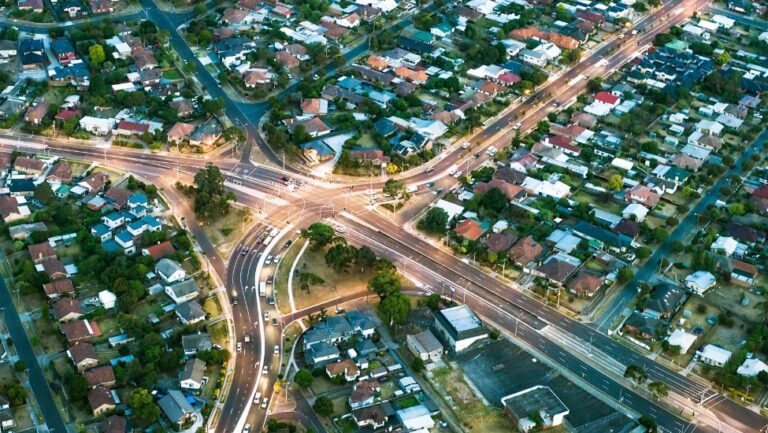Contributed by: Patrick McVeigh, Technical Director, Economic Development Advisory, and Robert Brodnax, Technical Fellow, Policy and Strategic Advisory, from Beca
On 22 August 2024, the Government released their Regional Deals Strategic Framework. Regional Deals aim to foster economic growth and productivity through greater collaboration between central and local government, private sector and iwi.
Under the Framework, Regional Deals have three priority objectives:
- Building economic growth
- Delivering connected and resilient infrastructure
- Improving the supply of affordable and quality housing
While other goals, such as ensuring resilient and sustainable cities and regions, are mentioned, the initial focus is on these three priorities.
Devolution and localism
There has been significant discussion about whether Regional Deals would lead to greater devolution and localism. However, the framework suggests that, unlike some international examples, devolution will not be a key feature of the New Zealand approach. Despite this and despite the lack of dedicated funding, we can expect Regional Deals to be a useful tool for both central and local governments. The emphasis on a shared 30-year vision supported by 10-year strategic plan is promising. The relationship with the new National Infrastructure Agency, which will support infrastructure delivery, is also crucial.
Staged approach
The framework outlines a staged approach to developing and implementing Regional Deals. Initially, up to five regions will be invited to submit expressions of interest. The criteria for participation include:
- Alignment with the Regional Deals Strategic Framework
- Growth potential
- Commitment to a regional spatial plan
- Capability and readiness to deliver
- Fiscal prudence
- Compliance with regulatory standards.
Following this, a memorandum of understanding will be signed, leading to final stage negotiations, including consideration of funding and financing tools, regulatory relief, and coordinated decision-making.
First wave and future opportunities
The Government aims to sign the first Regional Deal in 2025. While there is speculation about which regions will be invited to participate in the first wave, no formal invitations have been issued as of 31 October 2024.
Many regions will therefore be excluded and will need to wait for and future waves of Regional Deals. In the meantime, all regions will continue to experience significant infrastructure challenges, and all councils’ financial pressures.
It is therefore important for all regions to find ways to support their economies now, while also preparing for future Deals.
Key themes and preparation
Those regions not included in the initial wave should focus on the following dimensions to get deal-ready:
- Building a shared evidence base: A robust regional evidence base is essential for identifying issues and opportunities for any future deal. Understanding economic, demographic, social, and environmental conditions is critical for determining necessary interventions and infrastructure.
- Agreeing on a long-term vision and spatial plan: Setting a long-term vision and preparing the required regional spatial plan. Regional spatial planning has been a focus for Urban Growth Partnerships, but gaps remain. Economic objectives should be integrated with spatial objectives.
- Maximising existing and new tools: Regions should use existing tools and explore new ones to support early implementation of priority infrastructure projects.
Building a shared evidence base
To build a shared evidence base at the regional level, it’s important to look beyond administrative boundaries and consider the functional economic and spatial geography of the region. Having a good understanding of the underlying economic, demographic, social and environmental conditions, as well as the shape and performance of the Māori economy is critical.
A shared regional evidence base is essential to identifying the interventions and infrastructure required to respond to the stated priorities of Regional Deals. Developing such an evidence base can be beneficial to supporting the case for any proposed investments and can provide a baseline for agreeing priorities and measuring impacts. This will also be essential in demonstrating the costs and benefits of identified infrastructure priorities.
For example, with City Deals in the UK, projects were assessed against two key metrics: jobs created and additional gross value added (a measure of productivity). This assessment helped prioritise projects, regardless of their spatial distribution across different territorial authorities.
This was often preceded by detailed economic analysis of the regional economy’s strengths and weaknesses. For example, the Manchester Independent Economic Review (MIER), published in 2009, provided a strategic understanding of the city region’s economy and provided a platform for agreeing a pathway to long-term sustainable economic growth.
New Zealand regions can learn from these international examples, conducting thorough economic analyses and ensuring that proposed interventions and infrastructure projects are well-targeted and effective in addressing agreed regional priorities. This underpinning evidence base will also be essential for measuring progress and reporting on outcomes to communities and to ministers.
Agreeing on a long-term vision and spatial plan
Regional spatial planning has been a focus for those areas across the country that were designated as Urban Growth Partnerships, some but not all of which might be expected to participate in the first wave of Regional Deals, but there are still gaps nationally in the coverage of regional spatial plans.
Historically, regional planning in New Zealand has not sufficiently integrated economic outcomes, and has had less of a focus on understanding local and regional economies compared to providing land for housing and business needs. Regional Deals provide the opportunity to better connect and integrate spatial planning and economic outcomes. The last systematic approach was the National-led Government’s Regional Growth Programme in 2014, which created Regional Growth Studies for various regions. These studies are now outdated, and while some regions have developed new economic plans, they are not consistent in scope or approach.
Regions aiming for future Deals should ensure they have comprehensive regional spatial plans supported by clear economic objectives. These plans should integrate spatial, economic goals, and infrastructure requirements to provide a solid foundation for future economic growth.
An additional benefit of a shared long-term vision and regional spatial plan, supported by a clear pipeline of priority infrastructure projects, is that it provides a platform for working with iwi on intergenerational priorities, while also enabling investment and business attraction into a region, giving confidence to the private sector.
Maximizing existing and new tools
Building an evidence base and agreeing on a long-term vision and spatial plan is beneficial for all regions, but these steps alone do not lead to immediate action. Even regions with these elements in place need funding for implementation, which is expected to come from existing and new tools developed by the National Infrastructure Agency, local government, and private sector co-investment.
Regions should consider how to best use existing tools to support early implementation of priorities and infrastructure needs. Options include:
- Identifying under-utilised public land and assets: Sell these to fund key infrastructure projects, reinvesting revenue from sales, leases, or additional business rates.
- Council-led development: Establish joint Council Controlled Organisations (CCOs), Council Controlled Trading Organisations (CCTOs), or Special Purpose Vehicles (SPVs) to pool investments and public assets, facilitating project development and future revenue streams.
- Joint ventures and PPPs: Partner with the private sector to finance, build, and operate key infrastructure using models like Build Own Operate and Transfer (BOOT) contracts.
- Development contributions: Set clear strategies for development and financial contributions to support identified infrastructure needs.
- Infrastructure development agreements: Partner with developers to fund infrastructure in future urban areas, with development contingent on agreements.
- Value capture and new revenue streams: Identify opportunities for value capture from regional spatial plans and zoning decisions, and explore new user charges, tolls, regional targeted rates, tourism levies, mineral royalties, or coastal use charges.
- Extending use of the IFF Act: Use existing Infrastructure Funding and Financing (IFF) Act provisions, including anticipated enhancements to the IFF being considered through the National Infrastructure Agency.
In addition, there are also mechanisms that can be used to increase regulatory certainty can attract private sector funding, including iwi trust investments. These include:
- Fast track consenting processes: Streamline and simplify planning processes.
- Te Waihanga’s infrastructure prioritisation: Propose key projects for inclusion to signal partnership and investment opportunities to the private sector.
While there are pros and cons associated with each of these approaches, and not all tools will be suitable for every project, there are strategic benefits of systematically considering how existing tools might be applied and what barriers exist to their current use. This in itself, is a helpful process to have run through prior to seeking any future regional deal. By systematically considering these tools and addressing barriers to their use, regions can better prepare for future Regional Deals and support early implementation of their priorities.
Embracing localism
Local government has expressed a desire for greater localism, with more decisions made locally. The Review into the Future of Local Government emphasised this, stating that local government must drive change.
While many recommendations remain unactioned, Regional Deals should be a start of the process of getting greater alignment and shared priorities between central and local government. In the meantime, local governments should focus on working together at the regional level, and on collaborating with the private sector and iwi to take control of their destinies, while remaining open to opportunities associated with future waves of Regional Deals.




